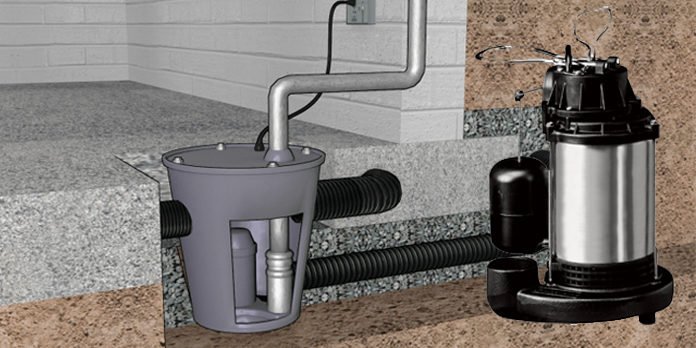Sump pump installation is so easy that you can do it on your own. So much so that you do not need to enlist the services of a professional plumber. However, it will do you good to know that there are several different types of sump pumps, each with a differing set of installation instructions.
The pump is set in a basin, otherwise known as a sump pit. This is to be located at the lowest spot in the basement floor. Alternatively, place it where water first accumulates. Sump pits can be purchased at home centers. As the water level beneath the basement floor rises and fills the pit. This, in turn, activates the pump and initiates the discharge of water outside. Once the water level falls, the pump shuts off.
Types of Sump Pumps
There are two types of sump pumps usually installed in houses: submersible pumps are fully concealed in the sum pit. On the other hand, pedestal pumps are only partially concealed, with the motor resting above the water.
Sump pumps have long cords. This allows you to plug them into a receptacle that is protected by a ground fault circuit interrupter. However, be careful not to use an extension cord with a sump pump unless it matches the recommendations of the pump manufacturer.
Also Read: Why every homeowner needs a sump pump
Digging a Sump Pit
If you want to install your own sump pump, plan to spend $300-$500 for materials. You will need a jackhammer to break through the concrete. Electric jackhammers are easy to use and can be plugged into regular household outlets.
Next, set your sump basin upside down on the floor, draw a circle about 4 to 6 inches outside the perimeter of the basin while making sure a distance of at least 10 inches from the walls. This is to avoid the foundation footing. Once this is done, use the jackhammer to break through the slab along the line.
Dig the hole to the required depth; the top of the basin should be at the same level with that of the floor. Set the basin in the hole and fill the gaps around the perimeter. This should be done with gravel, to a level approximately 1 inch above the bottom of the floor slab. The reminder of the perimeter gap should be filled with concrete. Smooth the surface of the concrete and allow to set for at least a day.
Installing the Sump Pump
The sump pump should be set in the basin as directed by the manufacturer. Connect the check valve and attach PVC discharge piping. Run the piping up the wall and out through a hole you drill in the rim joist.
Make sure to extend the piping to the outside. This will allow the water to drain away from the foundation. However, if the mark is not suitably sloped away from the house, you may need to install a dry well outside of the discharge piping to empty into. Cover around the hole in rim beam with a waterproof seal. Now plug the sump pump into the receptacle. Finally, be sure to fill the basin with water and test the pump.





